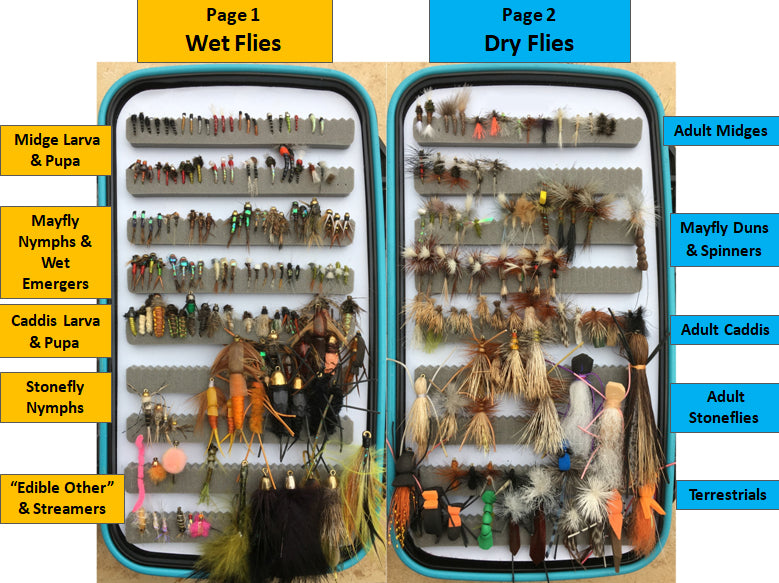
The Best Way to Organize Your Fly Box - The River Oracle Hatch Organization Method
The question was first voiced several hundred years ago when the grandfather of fly fishing pulled the first roughly-tied fly from the jaws of his primitive vice and mused, “Now what is this fly supposed to imitate and when should I fish it?” Echoing across the centuries, this same question can still be heard muttered from the lips of anglers stumbling from the doors of fly shops, emphasized with curses from along the banks of rivers around the globe. Apart from us lucky few who get to make a career out of fly fishing and find ourselves surrounded by hundreds of thousands of flies on a daily basis, knowing what the flies in our boxes imitate - let alone organizing them in any meaningful way- can seem like an overwhelming task. I would propose, however, that learning the families of insects and life-cycles that the your flies imitate, and creating order in your fly boxes is a task worth taking on. Like a well-honed tool in any craft, a purposefully organized fly box allows you to quickly dissect every hatch, maximizing your time in the water, and pays dividends with more fish in your net every trip to the river
Aquatic Insects Lead the Dance
Indelibly branded into the DNA of trout is the unrelenting need to feed. Like any predator, trout are intimately familiar with the cycles and patterns of their prey, and are in constant pursuit as their food migrates through the water column.
Trout’s food follows predictable, clock-work like patterns day to day, and season to season, and by organizing our fly boxes according to these patterns, we can always be ready to meet the trout where they are feeding and anticipate where they will feeding next. We’ve coined this approach to fly box organization modeled on nature the Hatch Organization Method.
A Page for Every Life Cycle & a Line for Every Hatch
The basis of the Hatch Organization Method is to lay out the flies in your box like a book, with one page covering the aquatic life cycles of trout foods that are imitated with wet fly patterns, and the opposite page covering the adult life cycles on top of the water that are imitated with dry fly patterns. Each row within the box belongs to one family of flies: one each for Midges, Mayflies, Caddisflies, Stoneflies, with the final row belonging to “Edible Others”, Terrestrials, and Streamers. Starting on the left hand side of our wet fly page, we pack the patterns that imitate the aquatic insects freshly hatched from their eggs - midge larvae, mayfly nymphs, caddis larvae and cased caddis patterns, and our stonefly nymphs. As those insects move through their aquatic life cycles and make their way towards the surface, we pack our emerger patterns to the right side of the family rows - midge pupae, mayfly emergers, caddis pupae, and our larger stonefly nymphs.
Mirrored on the same rows on the dry fly page of our box, we pack the patterns that imitate each family as they break through the surface of the water into their first adult forms - dry midge pupae, mayfly dun patterns, and dry caddis emergers. Then, moving across the dry fly rows of our box, we complete the adult life cycles of each family of flies, packing our fully emerged adult midge, mayfly, caddis, stonefly, and terrestrial fly patterns.
The Rewards of a Organized Fly Box
Once your flies are organized by the Hatch Organization Method, choosing the right fly patterns becomes as easy as dropping your finger on the correct family row and moving across that row to the life cycle that the fish are feeding on. As the fish follow the hatch through the water, so you move onto the next course of the meal simply by sliding your finger across the row. Done are the days of wasted time and missed opportunities, as you will be ready to match every hatch like a pro! So take take a page from Mother Nature’s book, and get your fly box organized. Fish will fear you and your buddies will be perpetually jealous each time they watch you net another fish!






